Inside the Wildlife Sanctuary Dining Experience Where Open Fire Cooking Is Empowering Rural Women
While at the airport in Mumbai, Pushpa Sidam squeezes in a call between connecting flights (Udaipur-Mumbai-Nagpur). We couldn’t have reached her at a better time; she is recovering from the excitement of her first trip ever. Glee colours her voice as she reveals, “Mujhe bahut mazza aaya (I had a lot of fun).”
Pushpa and her team, led by chef Tabrez Shaikh, were at Udaipur’s Leela Palace for a pop-up showcasing the seven-course meal they serve at ‘Palaash’ — an idyllic restaurant that shares ground with the area bordering the Tipeshwar Wildlife Sanctuary in Gondwakadi, Maharashtra.
Flanked by forest land, Palaash marks out a space where the story of traditional flavours is retold through a modern perspective.
A native of the Marathwakdi village in Maharashtra, Pushpa’s dreams were once confined to her home kitchen. “I never thought I’d be a chef one day!” But two years ago, a chance meeting with chef Amninder Sandhu, the creative force behind Palaash, changed her life.
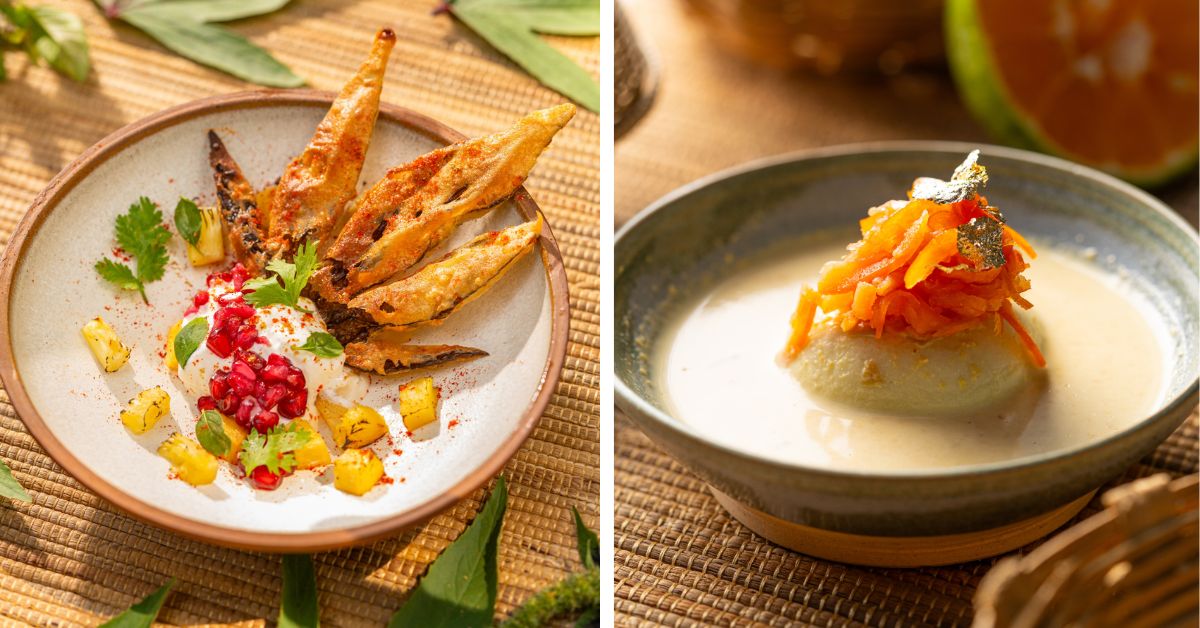 The ambaadi (L) and the angoori rabdi are some classics on the Palaash menu
The ambaadi (L) and the angoori rabdi are some classics on the Palaash menu
From sweeping the Tipai resort’s staff quarters — Palaash is located in a corner of the luxury resort Tipai — to now enjoying a say in the preparation of meals at the restaurant, it’s a full circle moment for Pushpa. She is one among the handful of women who are reclaiming their agency through the opportunity provided by chef Amninder.
But our chef shies away from credit. “These women used to make around 400 chapatis (Indian flatbread) for the staff cafeteria every day by hand, with the same precision. The consistency was beautiful.” As chef Amninder observed, their deft hand movements appeared governed by muscle memory.
“The idea behind Palaash was to uplift the population around it. I wanted to leverage the women’s skills to make a difference in their lives.”
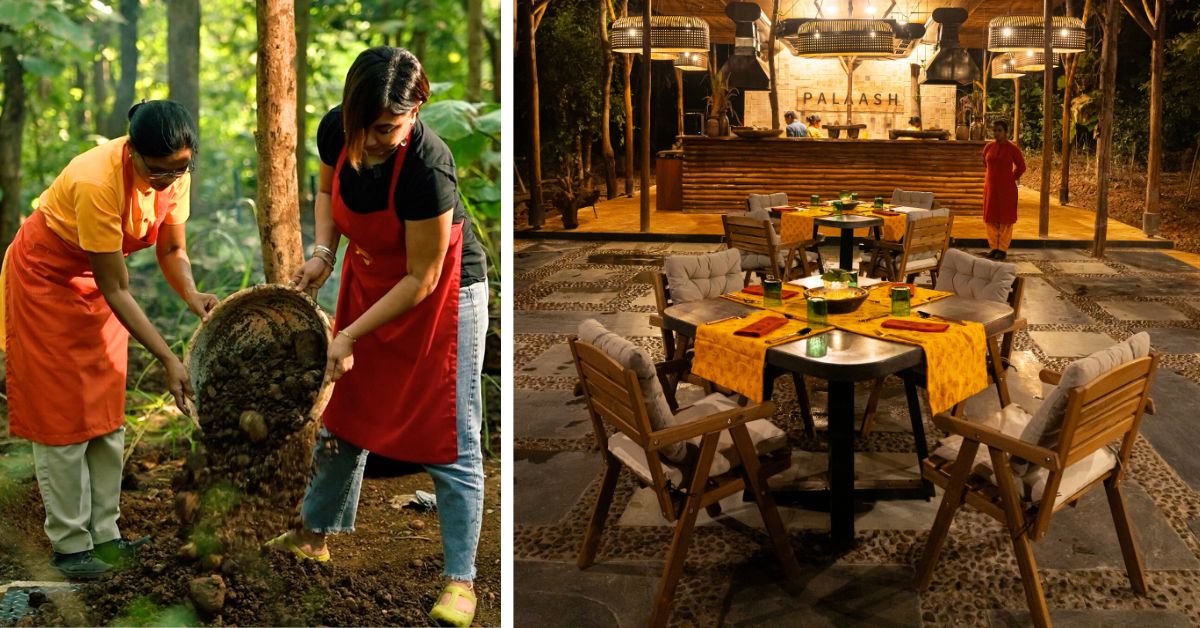 At Palaash, a dining experience tucked in a piece of land near the Tipeshwar Wildlife Sanctuary, there is an emphasis on gas-free cooking and meals are prepared in sandpits and tandoors
At Palaash, a dining experience tucked in a piece of land near the Tipeshwar Wildlife Sanctuary, there is an emphasis on gas-free cooking and meals are prepared in sandpits and tandoors
The women’s innate sense of the use of masalas stemmed from years of experiments in their home kitchens. “They have the restraint and maturity that Indian cooking needs,” chef Amninder taps into the sentiment, “That’s why when we were building Palaash, I wanted them on my team.” Pushpa and the others see the island kitchen as a lifeline that allows them to stay in touch with their dreams.
Dining in the wild to the beats of empowerment
At the Leela Palace in Udaipur, the guest list was all praise for the exquisite spread — think gendaphool sorbet (sorbet with the essence of marigold flowers), dahi ratalu gulab (a snack made of sweet potato and curd), and bamboo smoked pork. Pushpa sees the dichotomy between the intricate recipes she creates today and the staples she once limited herself to.
But some things haven’t changed. Growing up, Pushpa loved a good jawari bhakri (a flatbread made out of sorghum) and thecha (a condiment prepared by pounding chillies, garlic and salt). In fact, the thecha is what she treated chef Amninder to on their first meeting. The dish instantly found favour with her.
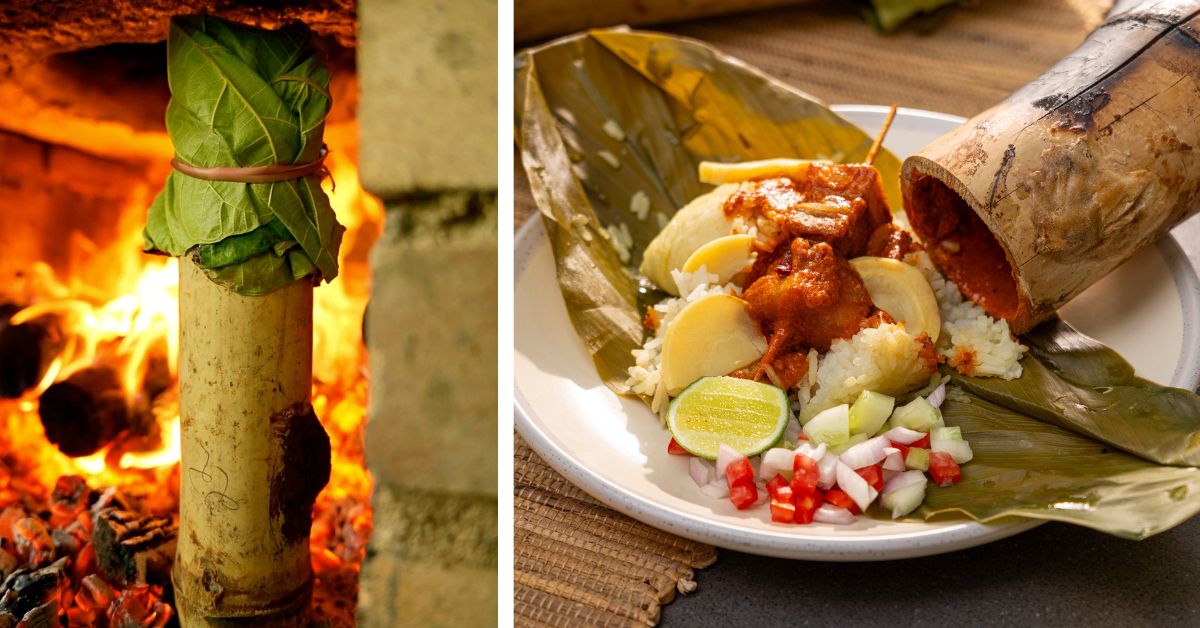 The meats and vegetables prepared using the smoked bamboo technique are hailed for their flavour and are favourites on the Palaash menu
The meats and vegetables prepared using the smoked bamboo technique are hailed for their flavour and are favourites on the Palaash menu
This was during the time the national award-winning chef was at Tipai mulling over plans for a potential dining space. Keyur Joshi, Founder of Wildlife Luxuries and co-founder and former COO of MakeMyTrip, was keen for Tipai to have a sustainable extension in the form of an F&B space that imbued the same sensibilities as the resort’s 15 villas built in eco-conscious style.
He wanted the space to be a cosy refuge for guests after their adventurous safari experience — the sanctuary is known for its population of tigers and birds.
“We wanted to make food the anchor of this project,” chef Amninder reasons. As she strolled with Joshi along the perimeter of the land, she could almost visualise the niche she wanted to carve out. A microbiome of sorts where meals could be enjoyed under the stars, surrounded by trees.
“I thought to myself, it will be all open-fire cooking with a dozen seats around,” chef Amninder shares. And so, Palaash was born in that moment; the next two years were spent translating it into flesh.
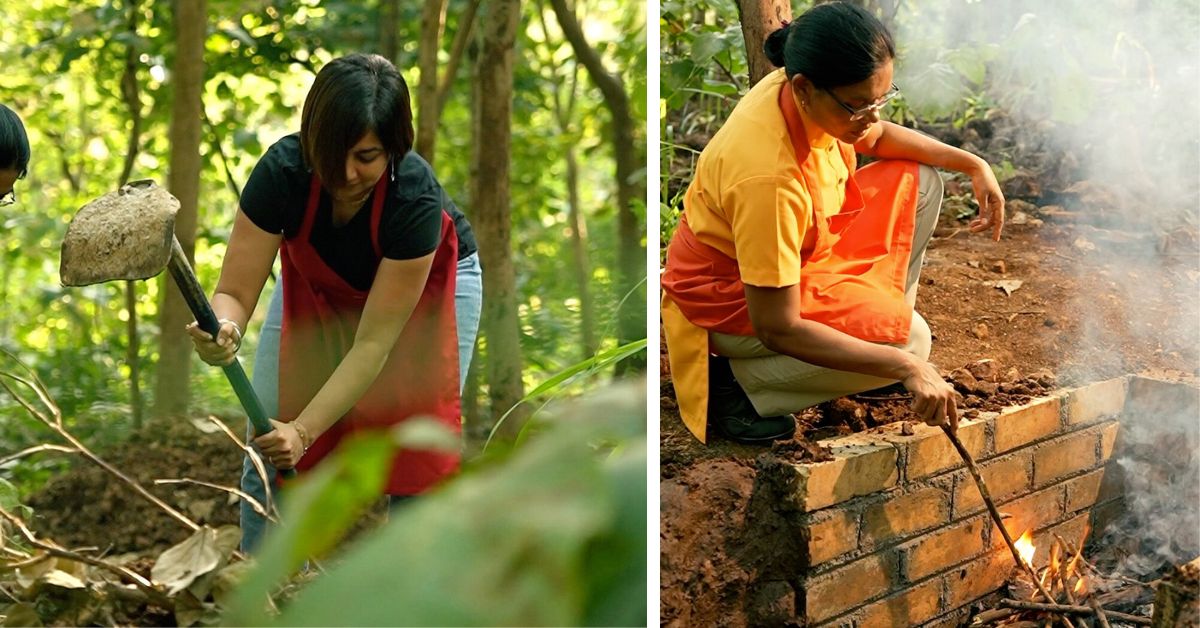 Chef Amninder Sandhu (L) has been following gas-free cooking techniques for years now and underscores their flavoursome advantages
Chef Amninder Sandhu (L) has been following gas-free cooking techniques for years now and underscores their flavoursome advantages
If you were to do a quick Google search for chef Amninder Sandhu, the words ‘open fire’, ‘gas-free cooking’ and ‘slow cooking’ would jump out at you. String them together and you’ll see where her genius lies. Her former culinary endeavours — Arth in Mumbai (no longer operational) and Bawri in Mumbai and Goa — are a case in point for gas-free cooking.
At Palaash, she wanted to draw upon the same approach. This is where the local women, adept at using the chulhas (traditional brick stoves), factored into the plan. “For them, working with open fire was just a very intuitive natural progression,” chef Amninder shares.
Indulge in the bounty of the jungle
Dinners at Palaash will give you the semblance of time-travelling to a simpler era, which permitted watching your meals spring to life with locally-grown ingredients obliging.
The high ceilings, the rustic architecture, the large beaver nests that double as lights, the smoke pits, the earthen stoves, the muddy trails, and the stillness that is broken occasionally by birdsong add to the vibe.
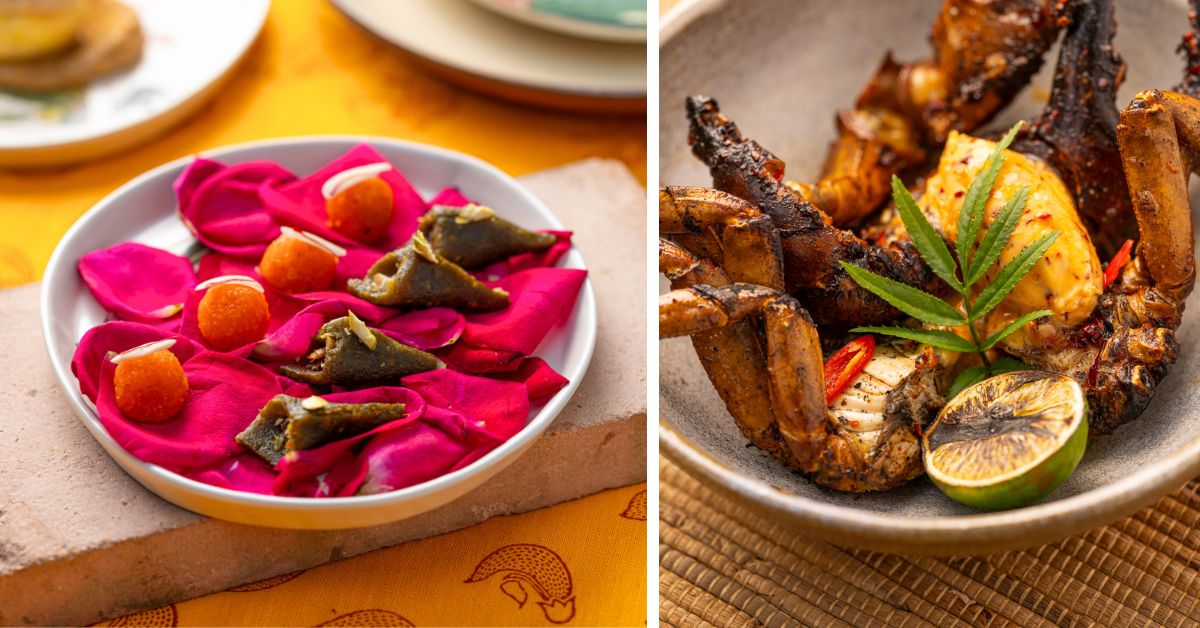 The pistachio paan motichoor laddoo (L) and the Nagpur black crab (R) are a testament to chef Amninder’s exemplary ability to fuse traditional flavours with modern touches
The pistachio paan motichoor laddoo (L) and the Nagpur black crab (R) are a testament to chef Amninder’s exemplary ability to fuse traditional flavours with modern touches
And the meals, too, reflect the earthiness of their surroundings. Lilac, indigo, and yellows dance across the table in the ambaadi (leafy green vegetable), charred ananas (smoked pineapple), and crisp kashiphal (pumpkin), which pave the way for the second course of slow-cooked raan (goat) with bhakri and lal theccha. Bold flavours and robust spices characterise the saoji cuisine native to Maharashtra’s Yavatmal region, and these shine through the saoji bater meal served at Palaash.
The menu is an eclectic archive; contrasting flavours exchange pleasantries with each other, moving in a capricious dynamic between subtle and bold.
The table transforms into a cross-fertilisation of tastes with dishes like puran poli profiteroles (a sweet flatbread made out of lentils in a new avatar with a French pastry), with amti dust (tangy Maharashtrian preparation), and a silbatta (mortar and pestle) ground thandai-dipped paan (betel leaf comprising coconut and gulkand). Each dish is part art and part flavour.
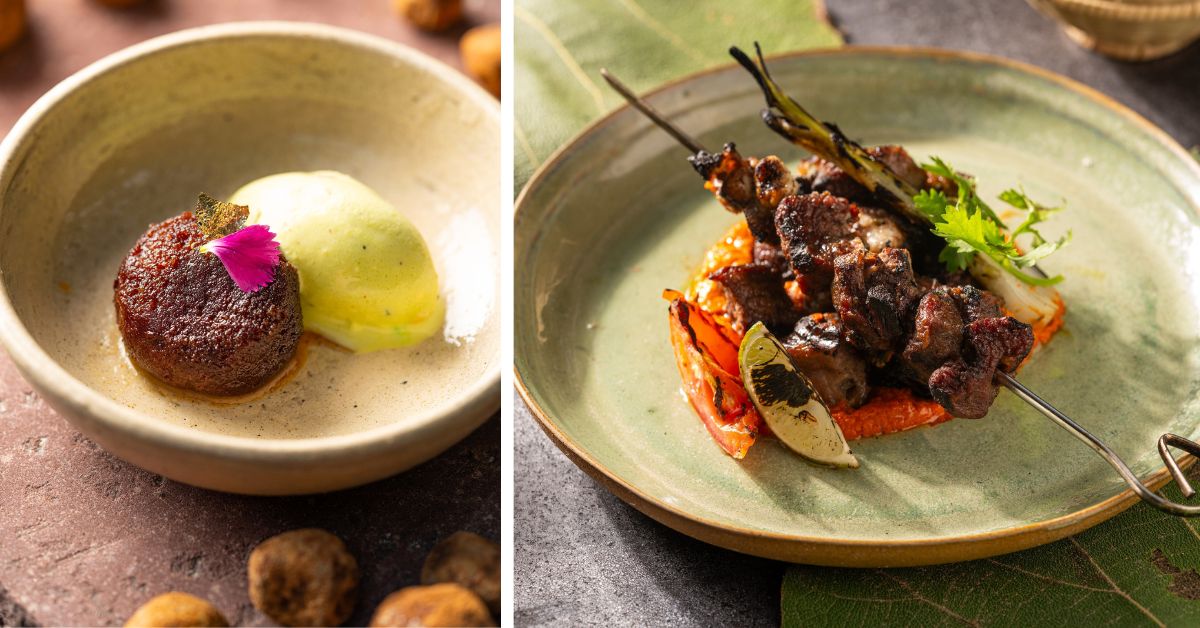 The mahua kala jamun and the maas ke soole are loved for the decadence they bring to the menu
The mahua kala jamun and the maas ke soole are loved for the decadence they bring to the menu
Chef Amninder virtually points us in the direction of the wadi experience (a wadi is a traditional farm or orchard common in Maharashtra). The kitchen garden, she explains, is a Mediterranean experience around a wood-fired oven. “When the guests arrive, we offer them a glass of sparkling wine and some canapés. They can make their own pizzas here and enjoy these at a community table where they are surrounded by pumpkin creepers.”
It might seem unbelievable that the land is home to a major portion of the ingredients that go into the food. A mini-universe of self-sufficiency, you could say.
‘If you can’t find the ingredient, grow it’
Growing up in Assam, the paucity of available ingredients compelled chef Amninder’s mother to grow what she couldn’t find in the markets. “She was always trying to up her game,” the chef states, backtracking to picnics in dense forests where her mother would teach her to fish. “Whatever we would catch, she would put it into a bamboo basket. Then we’d cook it. I’ve grown up with some beautiful childhood memories.”
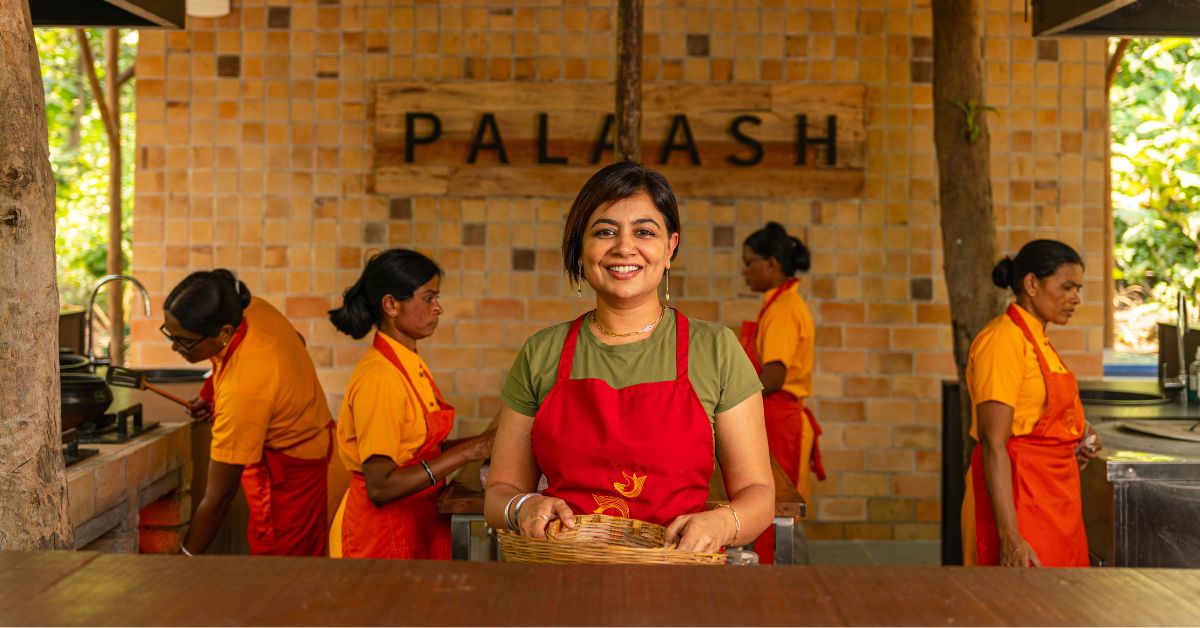 Amninder Sandhu is the creative force behind Palaash, a wildlife dining experience near Nagpur
Amninder Sandhu is the creative force behind Palaash, a wildlife dining experience near Nagpur
Today, nostalgia is a by-product of her cooking; her culinary techniques come laced with a fondness for those times. Even as the phrase ‘slow cooking’ kicked into the common parlance recently after a hiatus that lasted decades, for chef Amninder, it was something she’d been championing routinely. “I’m a sardarni (a Sikh woman) born and brought up in the Northeast. For me, bamboo smoked pork is just as important as an aloo paratha,” she shares.
Elaborating on the gas-free style of cooking that her food exemplifies, she credits interactions with the granddaughter of Maharaja Bhupinder Singh of Patiala. “While at the Taj, she shared some of her family heirloom recipes. These hadn’t ever been shared outside of the family. She would talk me through it and end by saying that if the same recipe was cooked in a heavy-bottom copper lager, it would taste absolutely different.”
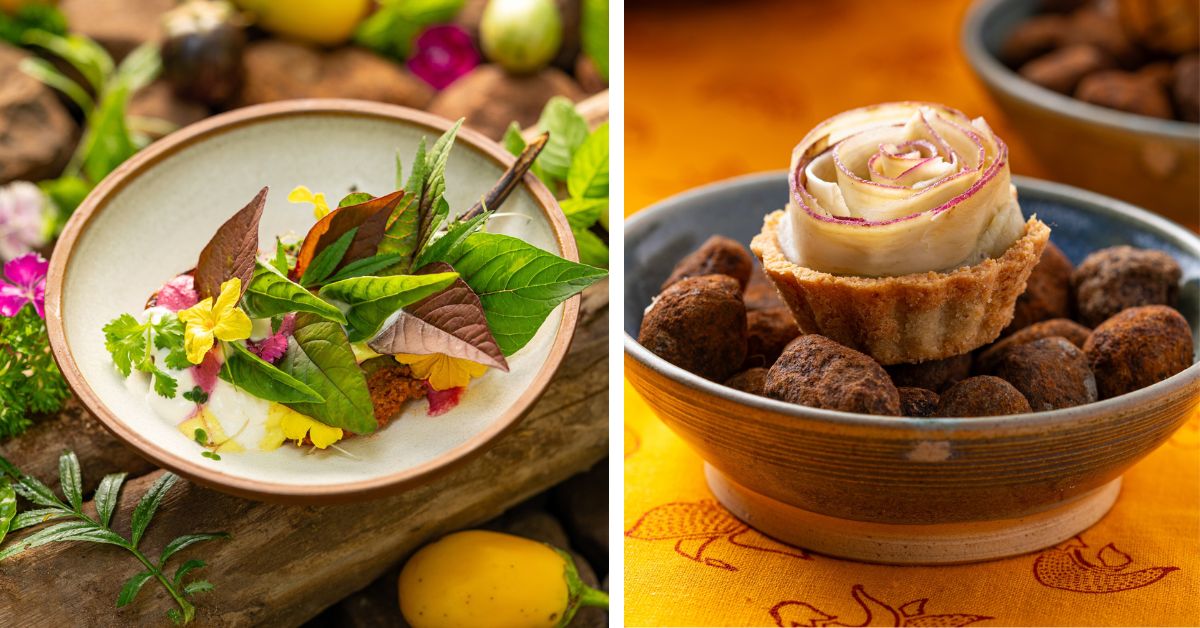 The smoked baingan and the ratalu gulab are some crowd pleasers at Palaash
The smoked baingan and the ratalu gulab are some crowd pleasers at Palaash
Chef Amninder took this as her cue to experiment with open-fire, gas-free cooking — a principle she wielded at Bawri and Arth. Lack of documented literature made it tricky. But the trial and error was exciting.
Gas was substituted for sandpits, tandoors (clay ovens) on which lagers (shallow vessels) would be set, charcoal fire tavas (pans), barbeque pits for tiger prawns, and crabs and sigris (stoves fuelled by cow dung and wood) for kakori kebabs (kebabs known for their melt-in-the-mouth texture) and lamb chops.
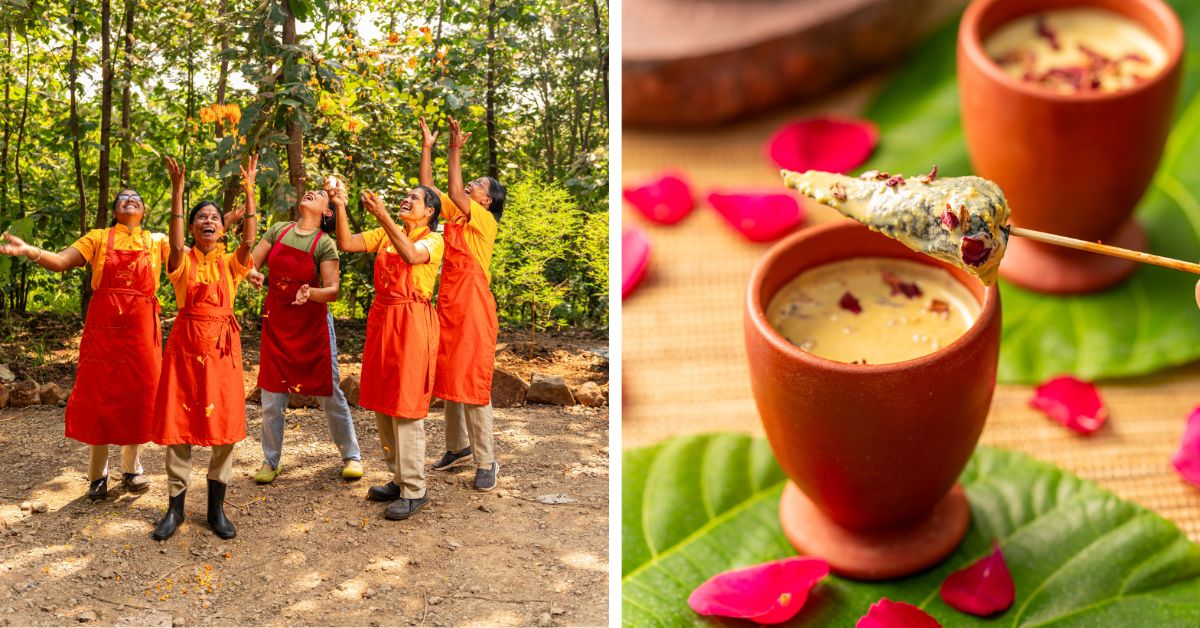 Chef Amninder is empowering the women from the villages of Nagpur, enabling them to channel their culinary prowess to earn a livelihood
Chef Amninder is empowering the women from the villages of Nagpur, enabling them to channel their culinary prowess to earn a livelihood
At Palaash, these practices continue to find their place in the island kitchen. Guests are invited to participate in the underground BBQ — an interactive activity where they can marinate meats and vegetables and watch these become starters and main course items. The Palaash design philosophy checks the boxes on ingenuity and food that boasts finesse.
I’ve heard the colour orange symbolises energy and warmth. A flicker of these traits is evident in every corner of Palaash — from the forest festooned with palaash trees that stretch far into the forest, to the glow of the fires around which the local women stand, to the smiles that accompany every serving. Orange stays true to its meaning.
Edited by Khushi Arora; All pictures courtesy the team at Palaash
News